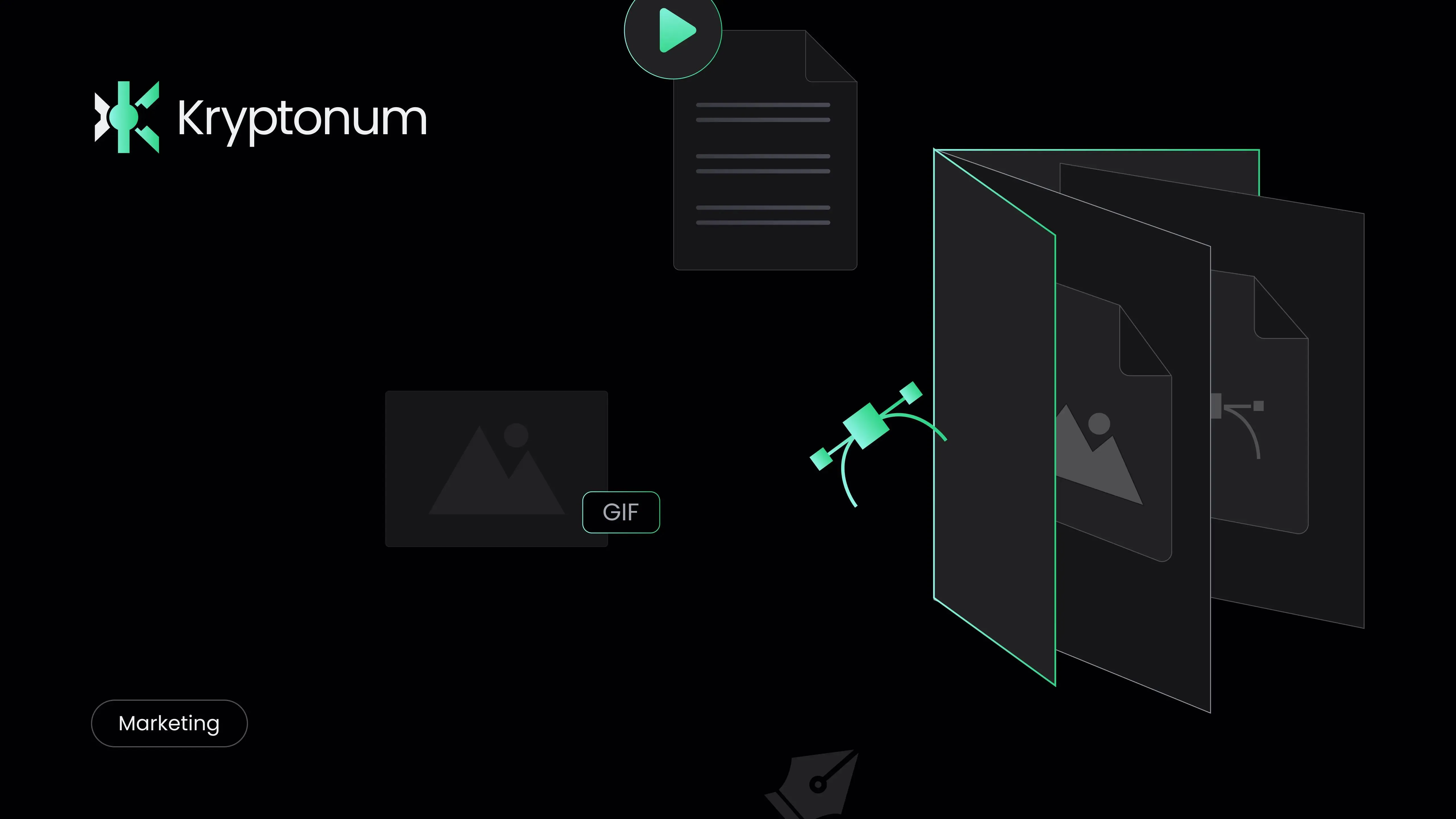❧ Which Image Format for a Website (and More)? Web Image Formats & Sizes
Your long-awaited banner is finally ready! Three meters high, seven meters wide—hard to miss! You mount that beauty on a billboard and the floodlights reveal… every flaw 🙊 Jagged logo lines, blurry faces, and the brand’s signature blue is… not even blue.
What went wrong? Poor print prep. Knowledge costs, but the lack of it costs more.
How do you avoid nasty surprises? In this guide you’ll learn which formats exist, what they’re for, and the pros/cons of each. Which ones shine in digital? Which are print-friendly? Dive in below 👇🏻
❧ The Right Resolution for Website Graphics
The most important divide in graphics is vectors vs. bitmaps (rasters).
-
Bitmap formats are measured in pixels. They have a fixed resolution, and when you zoom way in, imperfections appear.
-
Vector formats are defined by curves and geometric shapes. Thanks to math and transformations, they scale infinitely without quality loss. Ideal for specific use cases: illustrations, logos, icons.
A logo on a banner? Absolutely vector outlines 😁
❧ Image & Photo Formats for the Web—Why It Even Matters
Thinking strategically makes exporting so much easier. Decide where the graphic will live and how it’ll be used. That narrows your format choice fast.
- Printing physical brand materials? Choose PDF, TIFF, or EPS.
- Uploading to Facebook? Go with JPG, PNG, or WEBP.
- Publishing on your website? Pick WEBP, PNG, SVG, or AVIF!
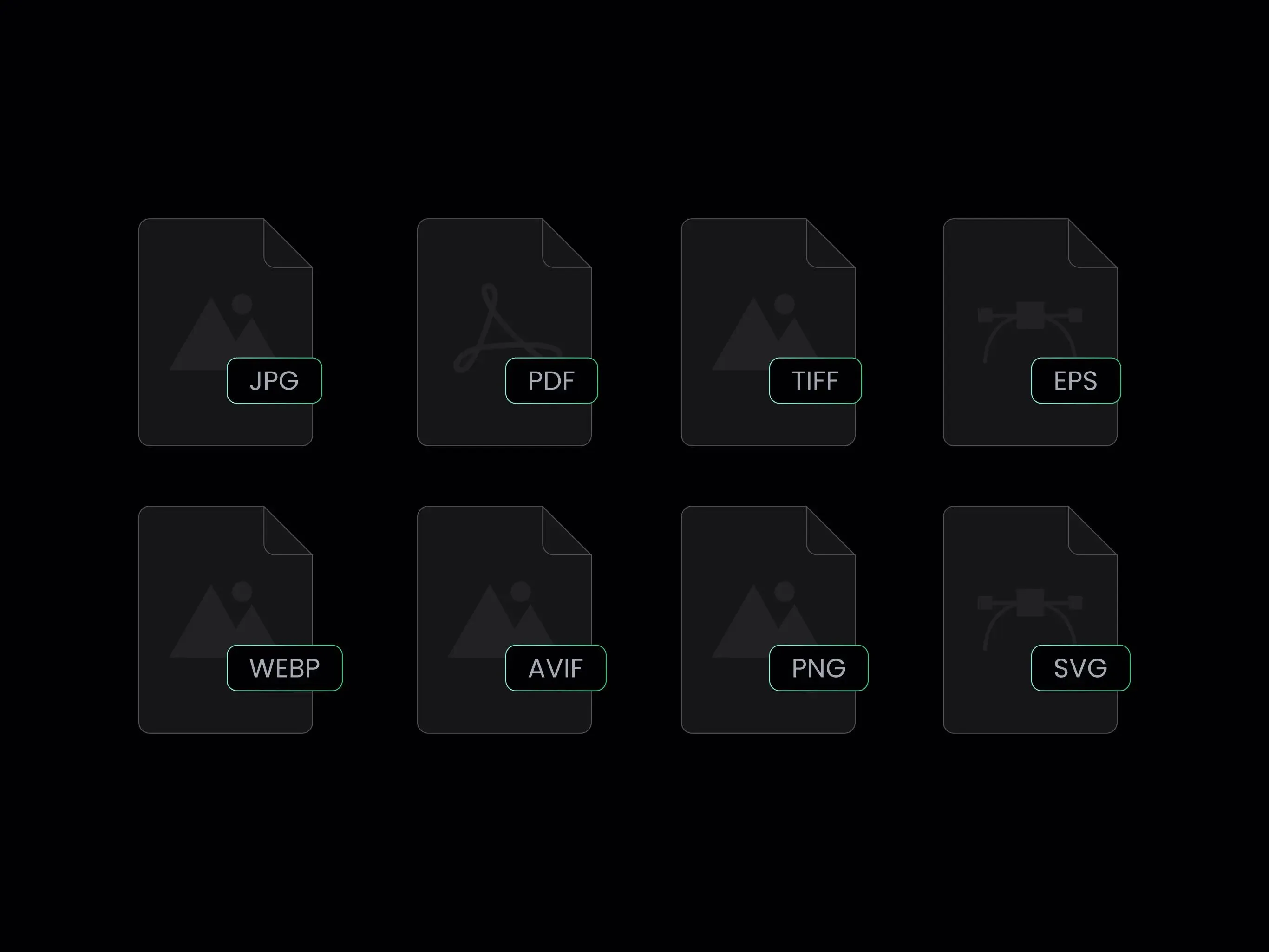
❧ The KryptoPyramid of Image Sizes & Weights
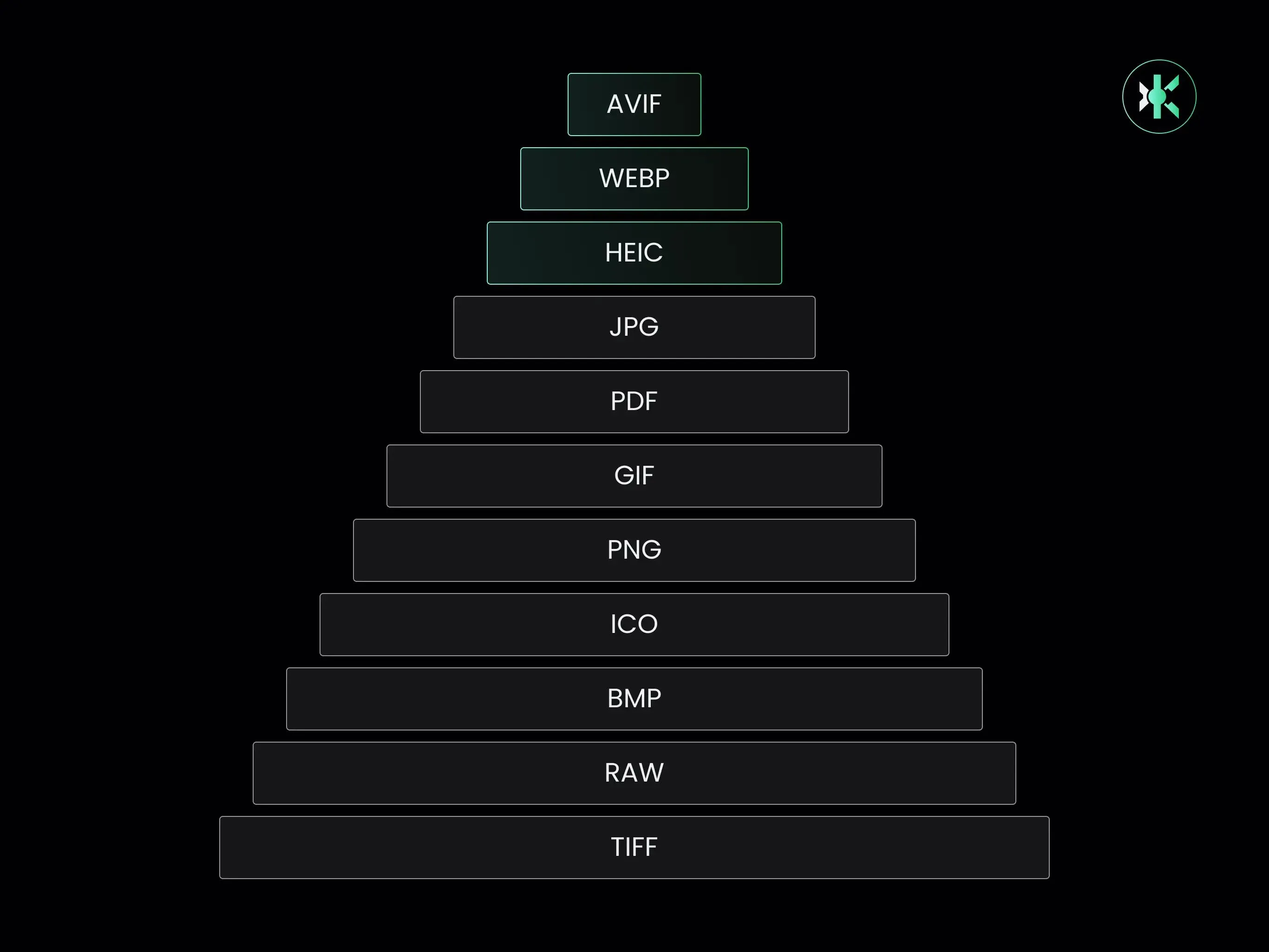
Does the Internet impact the environment?
Well… if it were a country, it would rank 4th in total emissions.
99.9% of websites contain at least one image. Over 60% of data transferred online is images and video. So what? 🤔
If you choose the right format, size it appropriately, and compress it well, you can reduce file size by up to 95%.
We like practical ecology. Huge images slow pages to a crawl. We minimize, squeeze, and wring every byte out of graphics and video 👊🏻
We’ve created a KryptoPyramid of file sizes by format. Use formats closer to the tip whenever possible 😉
Sure, edge cases happen—sometimes a PNG can be lighter than a PDF for a specific graphic. But for the vast majority, the KryptoPyramid will steer you right.
❧ The Most Popular Graphic File Formats
We’ll start with the common formats—when to use them and when to reach for alternatives. Then we’ll cover a few less frequent ones. No exotic stuff you’ll never touch—only options supported by mainstream devices and browsers 👨🏻💻
❧ JPEG / JPG
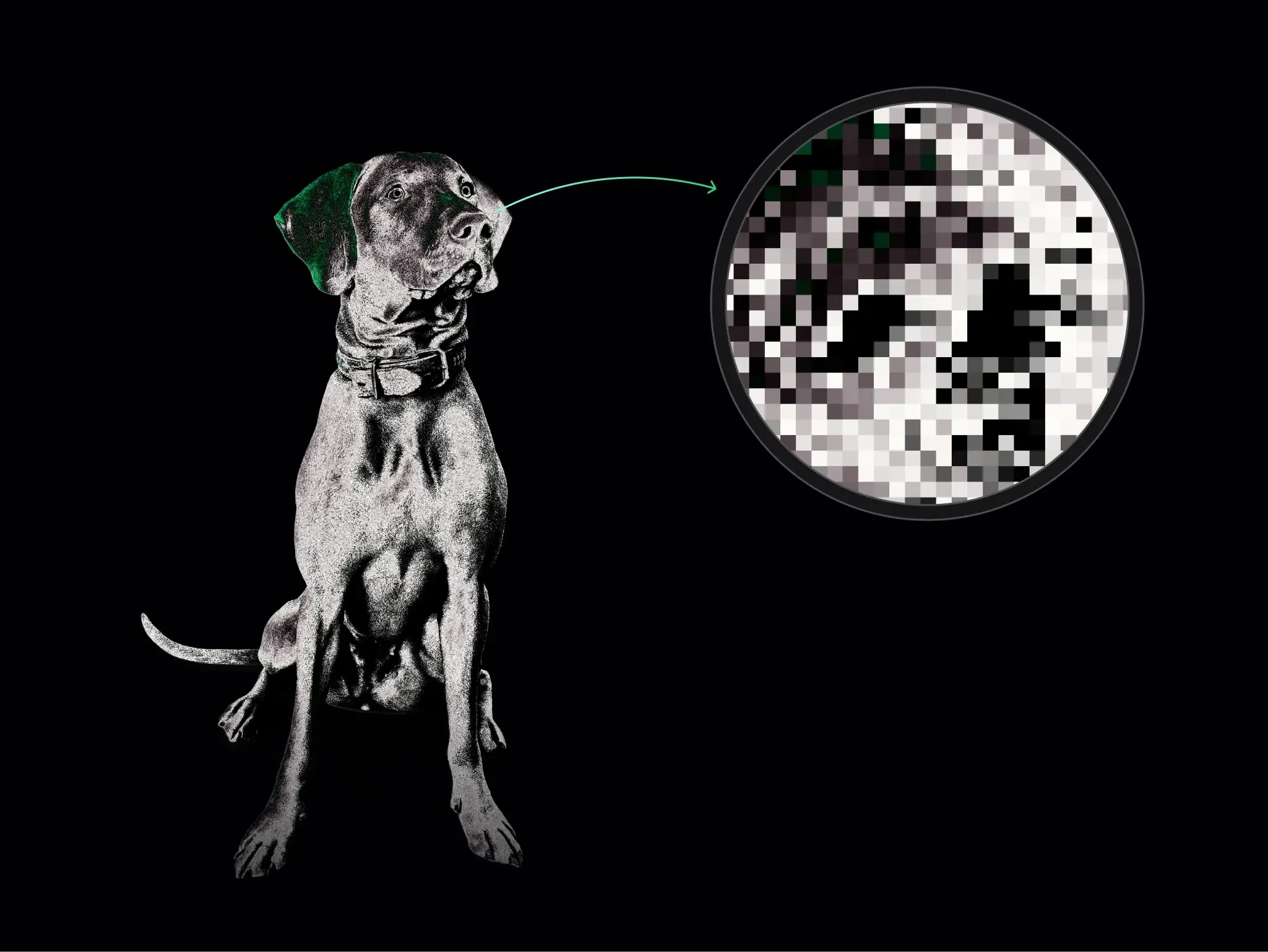
One of the most popular formats on the entire web. JPG is supported everywhere—every browser and social platform.
It’s usually saved with .jpg or .jpeg, but it technically accepts six extensions: JPEG, JPG, JPE, JIF, JFI, JFIF.
It uses lossy compression, giving a great quality-to-size ratio.
Sharp edges and fine lines can suffer during compression. For those, PNG is often a better choice. JPG has no hard max file size.
Want to zoom in on a photo of deep space? JPG can handle it 🪐
Pros
- Small files
- Solid color space support
- Massive system/browser support
- Can store metadata (e.g., shot location)
Cons
- Lossy compression
- Visible JPEG artifacts after saves
- No transparency
- Thin lines can degrade after compression
- Poor for images with very few colors
👌🏻 Use When:
- Ultra-high fidelity isn’t required
- A social platform doesn’t support WEBP
- For astrophotography or medical imaging
👎🏻 Avoid When:
- Cutting out elements, masking, background removal
- You need razor-sharp edges or tiny details
- You need transparency
- Logos, icons, illustrations
❧ WEBP
A fast-moving format developed by Google 👀
Pros ➕
- Supports animation and offers some of the best compression while keeping high quality
- Lossy and lossless options
- Supports transparency
Cons ➖
- Max dimensions: 16,383 × 16,383 px
- Fine textures (e.g., tree leaves) can lose detail with lossy compression
- Not every editing tool supports it
Use When:
- Highly recommended for website photos
- If a social platform supports it, make it your first choice
❧ AVIF
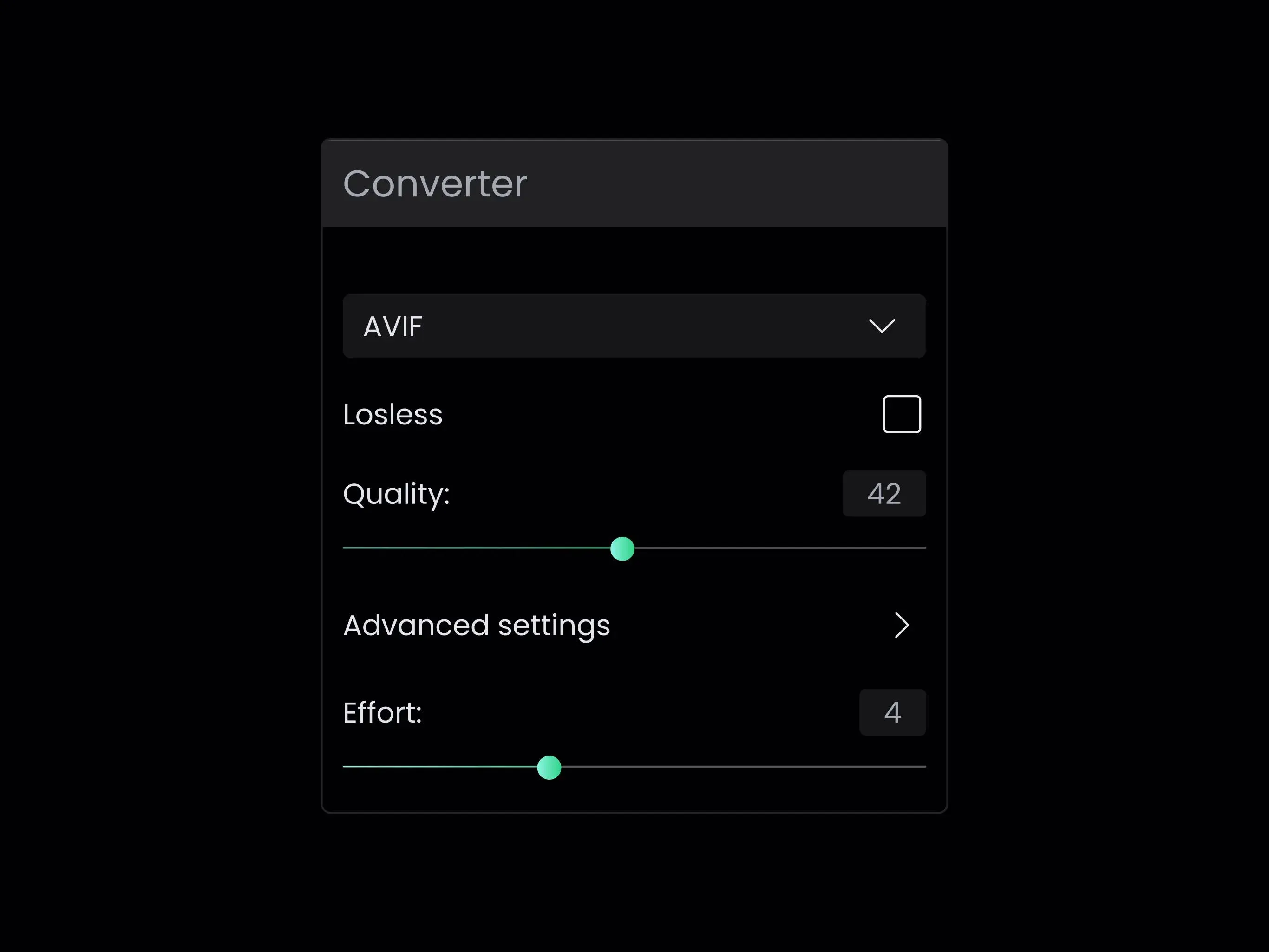
AVIF is a true next-gen format already used by Netflix and Etsy 🙆🏻♀️
Pros
- Lossless or lossy compression with good support
- Transparency and animation support
- Excellent color depth
Cons
- Many browsers and tools still lack full support
- Very small details can look blurred/softer
- Default limit around 8K (7,680 × 4,320 px)
- No progressive rendering (must load fully before display)
When to Choose AVIF?
👉🏻 Keep an eye on caniuse. Once AVIF browser support passes 90%, consider migrating WEBP images to AVIF wherever possible.
❧ PNG
The most popular transparent image format. For animated PNGs, use APNG.
Pros
- Supports transparency, high color depth, lossless compression
- Near-universal support across browsers, OSes, and social networks
Cons
- 🙅🏻♂️ Fewer effective colors for animation and typically larger files than other animated formats
Use When:
- On social for images with mostly vector-like elements and WEBP isn’t an option
- For transparent backgrounds when you can’t use WEBP
❧ SVG

The most popular vector format on the web ✨
Pros:
- Tiny files
- Can be animated
- Search engines can read keywords inside SVGs, helping SEO
Cons:
- Not ideal for very complex animations
✅ Use When:
Logos, illustrations, icons, charts on websites
❧ RAW
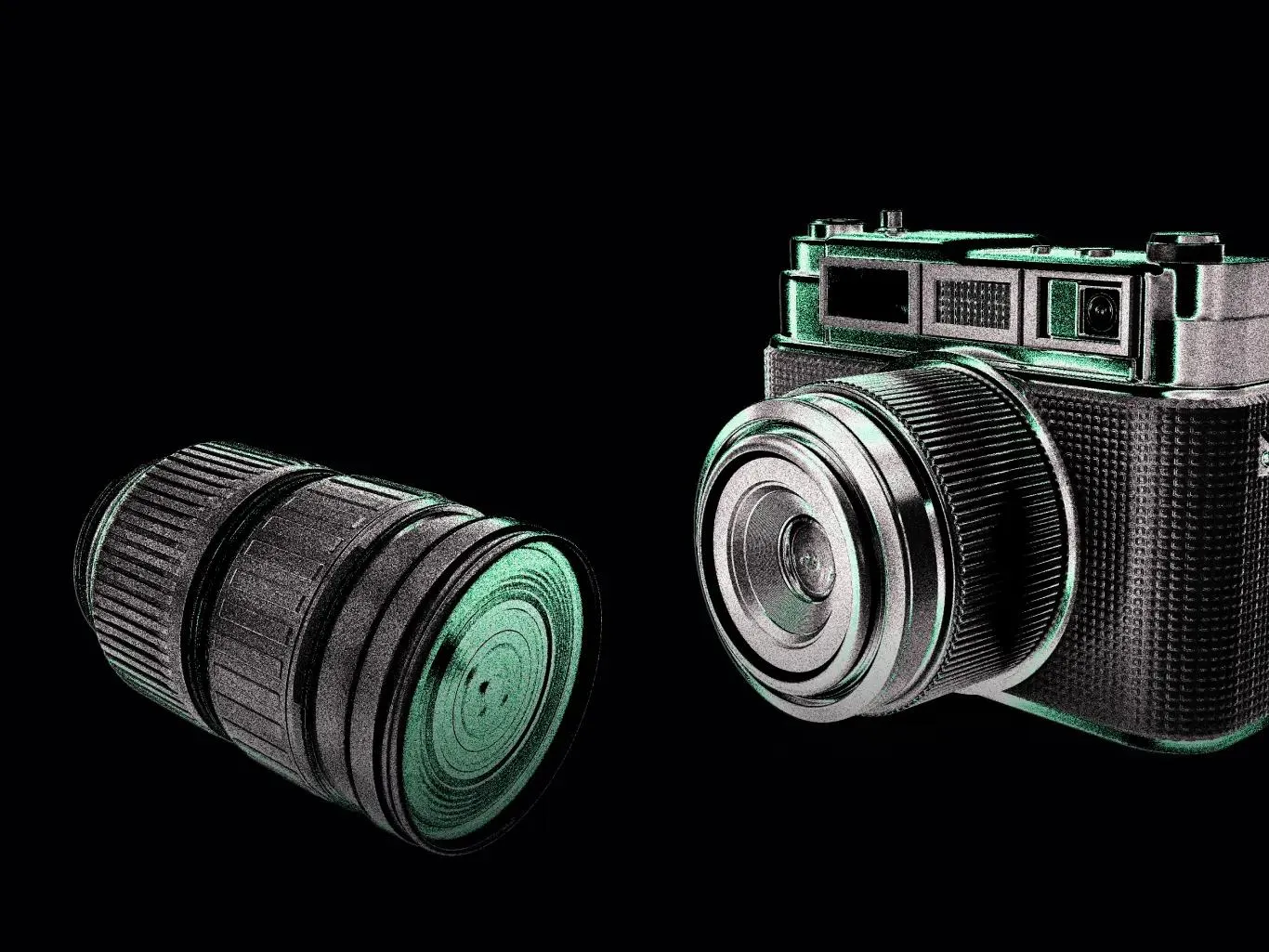
Beloved by photographers 💚 RAW files are raster, but they’re not images as such. They store all the sensor data captured by the camera without quality loss 📸
Pros ➕
- Highest fidelity of any format
- Incredible color depth
- Stores abundant editable data (aperture, white balance, etc.)
Cons ➖
- Huge file sizes
- No universal standard (Adobe’s .DNG is an attempt)
- Needs dedicated software (Lightroom, Photoshop, Affinity) to preview/edit
- Interpretation varies by camera manufacturer
Comparison:
JPEG
- ~256 levels of brightness
- 16.8 million colors
RAW
- 14-bit RAW: up to 16,384 brightness levels
- 68.7 billion colors
Best Use: Photo editing and post-production 📷
The standard for presentation and print.
Pros 👍🏻
- Most popular document format; supports CMYK and RGB
- Can contain multiple pages and links
- Preserves very high quality
Cons
- Preview issues (especially on mobile) and harder to edit after the fact
PDFs can be password-protected—common for documents from public authorities, and great for privacy/security 🔐
Use For:
- Print files
- Documents
- Digital presentations
❧ GIF
Primarily used for animation, sometimes for single images.
Pros ➕
- Lossless compression
- Broad support
- Transparency support
Cons ➖
- Limited color palette
- Larger than other animation formats
- Anti-aliasing often shows a white halo on “transparent” GIFs
Use When:
- Making looping memes for social media
- WEBP isn’t supported? Use GIF.
❧ HEIC
An image format introduced by Apple 🍏
Pros:
- About 2× smaller and noticeably higher quality than JPG
- Great color depth
- Can contain image sequences (helps pick the best frame)
- Supports transparency
Cons:
- Near-zero support outside the Apple ecosystem
What's interesting, HEIC includes a depth map—it knows what’s closer vs. farther. Designers can go wild with background blur or parallax 💃🏻
Use When 👇🏻
If you’re on Apple devices, store photos as HEIC. Massive storage savings.
❧ TIFF
Originally created to standardize scanned images.
Pros 👍🏻
- Stores layers
- Lossless compression
- Strong OS/app support
- High color depth
- Supports transparency and CMYK
Cons 👎🏻
- Large files
- File size limit around 4 GB
For print, PDF is usually better—unless you only care about image quality without text, where TIFF excels 👌🏻
Use When:
- Printing photos only (no text) with maximum quality
- Astrophotography 🪐
❧ Image Optimization & Page Speed — Compression Tools
Why does solid image optimization matter so much? 🤔
-
Your images look great on mobile and tablets, not only on desktop
-
It dramatically impacts load time and perceived website speed
-

Your site consumes less energy—it’s more eco-friendly
How to shrink files while keeping great visual quality?
-
Pick the right format for the job
-
Convert to that format (e.g., convertio.co)
-
Resize to the exact dimensions you need (iloveimg.com)
-
Compress the final file
- For WEBP, JPEG: Squoosh
- For PNG: TinyPNG
- For PDF: ILovePDF / Adobe Compress PDF
- For SVG: SVGOMG
❧ How to Prep & Optimize Images for a Website—Summary
Wondering which format to choose? 🧐
If a platform supports WEBP, use WEBP. It fits most scenarios—no need to overthink it. Choose WEBP and save yourself time ⌚
Apply the Pareto approach to graphics and default to these four formats 👇🏻
- WEBP – for digital use, photos, and complex images
- SVG – for vectors, logos, simple illustrations & UI graphics
- PDF – for print and slide decks
- RAW – for photo editing and advanced compositing
